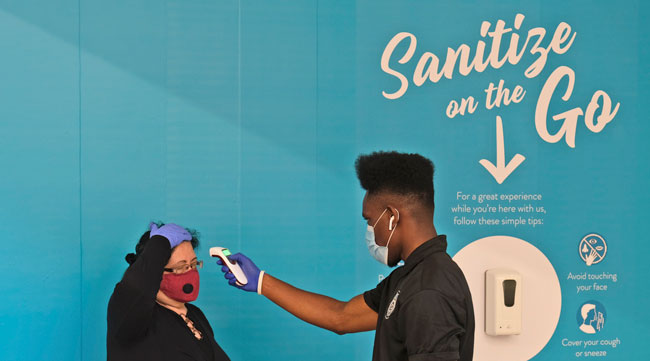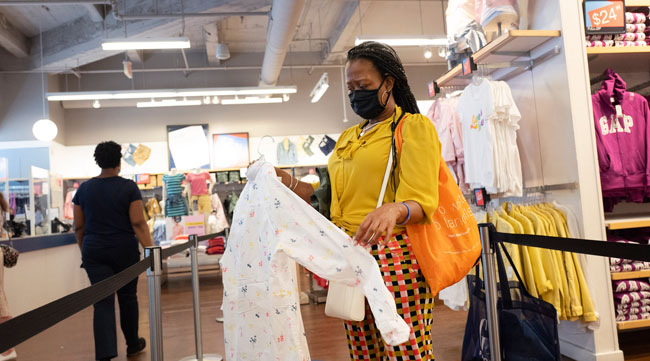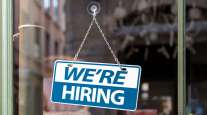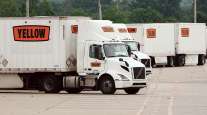Senior Reporter
US Unemployment Falls to 11.1%; Trucking Adds 8,000 Jobs

[Ensure you have all the info you need in these unprecedented times. Subscribe now.]
The U.S. unemployment rate fell to 11.1% in June according to the Labor Department as the economy added 4.8 million jobs and the easing of coronavirus-related restrictions allowed more businesses to reopen while bringing back some of their employees.
The Labor Department numbers beat the expectations of most economists who had forecast the U.S. to add between 1 million and 3 million jobs. In May, the economy added 2.7 million jobs, according to revised government figures.
Truck transportation picked up 8,000 positions, and support activities for transportation added another 7,000.

Transport Topics introduces its newest digital interview series, Newsmakers, aimed at helping leaders in trucking and freight transportation navigate turbulent times. Audience members will gain access to the industry's leading expert in their particular field and the thoughtful moderation of a Transport Topics journalist. The inaugural episode — "Understanding Trucking's Economic Landscape" — featuring American Trucking Associations Chief Economist Bob Costello, will air live on July 9 at 2 p.m. ET. Registration is free. Sign up today.
President Donald Trump was quick to seize on the numbers, stepping before reporters in the White House briefing room to issue a statement saying the improvement in unemployment shows his economic policies are working.
“Today’s announcement proves that our economy is roaring back. It’s coming back extremely strong,” Trump said. “These are historic numbers in a time that a lot of people would have wilted.”
While the numbers show an improving economy, much of the information tabulated by the Labor Department was boosted by numbers from early and mid-June, before several states with major population centers, such as California, Texas, Florida and Arizona, saw coronavirus cases spike. Because of the increase in cases, governors and local officials began ordering some businesses closed and put stay-at-home orders back in place.
According to the report, transportation and warehousing added 99,000 jobs in June, after declines in the prior two months, when 588,000 jobs were lost in April and May combined. In June, employment rose in warehousing and storage by 61,000 positions. Couriers and messengers added 21,000.

A New Jersey mall employee checks a customer's temperature before they enter on June 29. (Seth Wenig/Associated Press)
The weekly initial unemployment claims, considered a more current indicator of the state of the employment picture, remains at historically high levels.
According to the Labor Department on July 9, new claims for benefits were 1.3 million for the week that ended July 4. That was slightly below expectations of economists polled by Bloomberg, which estimated 1.38 million Americans would file for benefits.
Since the start of the COVID-19 pandemic in late February, an estimated 50 million unemployment claims have been filed. That figure far surpasses the 37 million who sought benefits during the Great Recession of 2008-09. Still, weekly claims have declined for 14 consecutive weeks from the peak in mid-March, when 6.9 million Americans sought benefits. According to the Labor Department, 18.1 million workers were receiving unemployment benefits the week ending June 27. That’s a drop of 700,000 and the lowest reading since the week ending April 18.

A woman shops for clothing in a Gap store in New York on June 30. (Mark Lennihan/Associated Press)
Manufacturing employment rose by 356,000 in June but is down by 757,000 since February. June employment increases were concentrated in the durable goods component, with motor vehicles and parts picking up 196,000 jobs. That accounted for more than half of the job gain in manufacturing. Employment also increased over the month in miscellaneous durable goods manufacturing with 26,000 positions added. Machinery gained 18,000. Within the nondurable goods component, the largest gain occurred in plastics and rubber products with a boost of 22,000 jobs.
Economist Rajeev Dhawan, director of the Economic Forecasting Center at Georgia State University, told Transport Topics the economy is improving because of the multitrillion-dollar programs Congress passed earlier this year.
“It tells me the fiscal progress that they passed, the Paycheck Protection Program, allowed companies to bring back some of the employees in the industries that took the first hit, in March and April,” Dhawan said. “This program worked.”
But Dhawan said he is concerned over the significant increase in coronavirus cases.
“We’re not out of the woods until this virus is gone. The virus will dictate the speed of the recovery period,” he said. “If anyone thinks that from here on it’s going to be a smooth ride, I think you’re in for a shock.”
Want more news? Listen to today's daily briefing:
Subscribe: Apple Podcasts | Spotify | Amazon Alexa | Google Assistant | More




